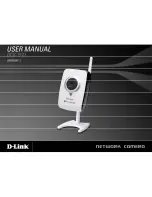
RANGE SETTING USING THE AUDIO WALK-TESTER OPM-WT
The OPM-WT converts the voltage fluctuations at the detector into a changing audio tone. The tone pitch rises
and falls as a zone is crossed. When the unit trips into alarm, the tone pitch suddenly rises. If there is no further
movement the unit will re-set after some 10 seconds and the tone drop back to a lower pitch.
The OPM-WT has a switch allowing selection of either the ‘near’ or ‘far’ detector signals. It is plugged into the
jack socket on the head underside next to the cable outlet. To avoid confusion, only one channel of the two dual
channel processors are monitored. This means that crossing the zones one way may give a fluctuating tone
followed by a trip, whereas crossing in the other direction may give a trip first.
Where the control unit is located close to the detector head, both the walk-tester and the alarm LEDs may be
observed. (See Fig. 7). Where the control unit is remotely located, the walk-tester is the main means to assist
with alignment.
If the control unit is remotely located and a walk-tester is not available, it is possible to observe the near and far
alarm conditions by means of a milliamp meter connected in series with the red (+ve) signal cable. It is even
possible to align the heads without any connection to the control unit by use of a 12volt battery and a milliamp
meter. Fig. 8 shows this method and the chart shows the current flows to be expected for the various alarm
conditions.
The above method only shows alarm trip conditions, it cannot show background fluctuations of the sensor
signals which may be excessive. The OPM-WT walk-tester is strongly recommended since it is easy to hear any
fluctuations which may be caused by unwanted motion of the sensor or objects within the zones. It also clearly
shows where the zone boundaries are and where the ultimate range of the zones are.
Fig. 7
CONTROL
UNIT
FAR LED
NEAR LED
POWER ON
LED
TAMPER
LED
MEGARED
HEAD
Fig. 8
MEGARED
HEAD
RED
BLUE
12 VOLT
BATTERY
QUIESCENT
‘NEAR’ TRIPPED
‘FAR’ TRIPPED
BOTH TRIPPED
7.5 mA
19 mA
31 mA
42 mA
MILLIAMPS
OPM-WT
OPM-WT


























